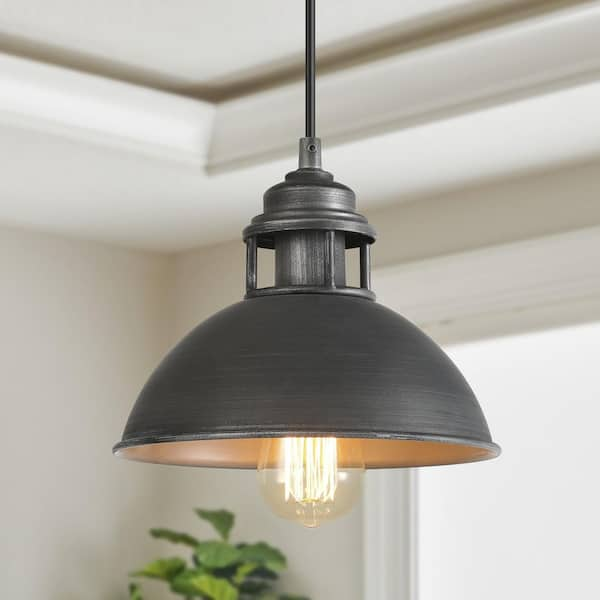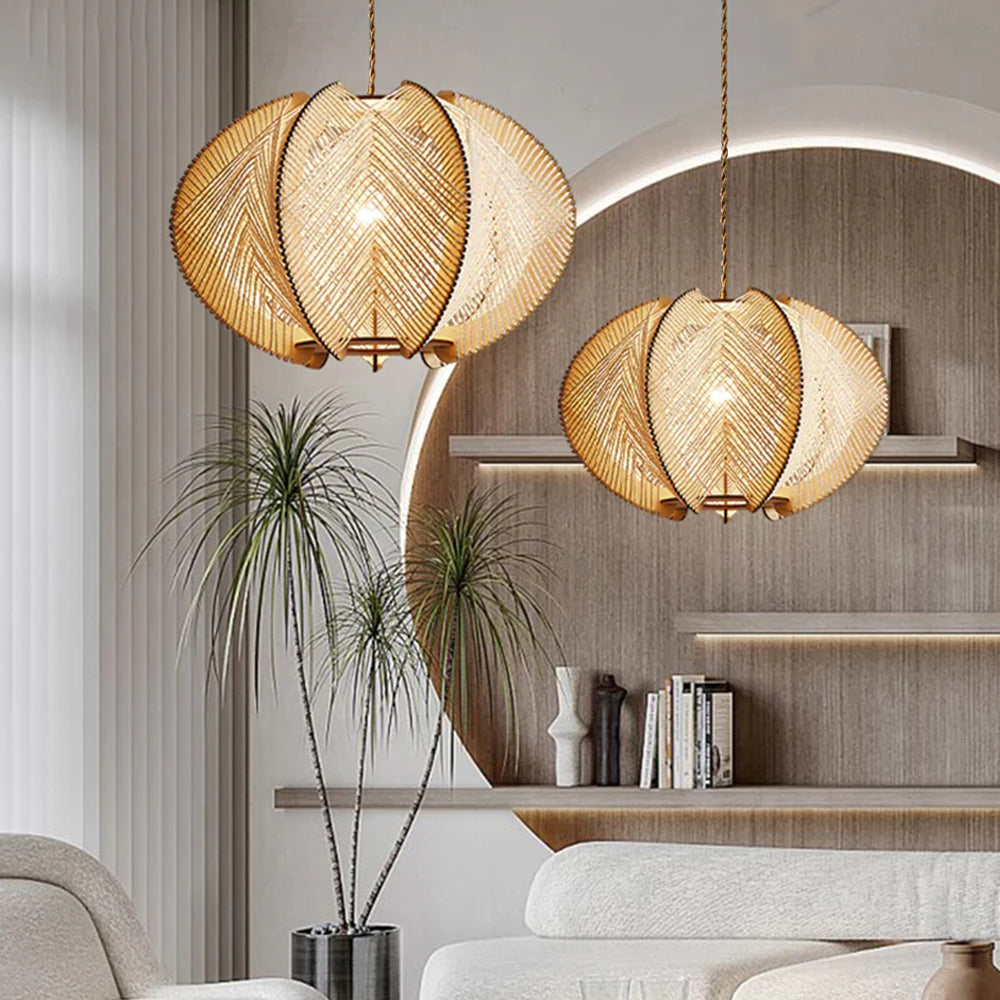Exactly how to Choose the Perfect Pendant Light to Enhance Your Inside Style
Choosing the ideal pendant light requires cautious factor to consider of numerous components. The design should align with the general decor, while dimension plays an essential duty in making sure correct proportion. Color and finish options can improve aesthetic appeal. Additionally, assessing light output is vital for performance - Pendant Light. Understanding these elements can transform a space, developing a welcoming environment. The process entails even more than just appearance; there are practicalities that should additionally be addressed.
Recognizing Different Pendant Light Styles
Pendant lights come in a selection of styles, each offering unique visual and useful benefits. From industrial styles that feature revealed bulbs and metal surfaces to classy glass components that evoke a sense of sophistication, the alternatives are substantial. Contemporary necklace lights often stress minimalist forms and clean lines, while vintage-inspired designs may incorporate intricate describing and warm tones.
For those seeking a rustic appeal, components made from natural products like wood or rattan provide a comfortable feeling. Additionally, multi-light necklaces can act as statement pieces, integrating numerous light bulbs in a solitary design for dramatic effect.
Each design adds in a different way to a space, affecting the general setting and character. Recognizing these diverse pendant light styles allows developers and home owners to make informed selections that line up with their indoor layout vision, enhancing both capability and visual charm in their settings.
Determining the Right Size for Your Room
When choosing a pendant light, accurately determining the ceiling height is necessary for accomplishing the appropriate balance in a space. In addition, calculating the scale of the fixture in relationship to the surrounding space assurances that the light complements rather than overwhelms the design. These variables play a crucial role in developing an unified interior setting.
Measure Ceiling Elevation
To achieve a visually pleasing design, determining ceiling elevation is crucial for selecting the proper size of pendant light. The height of the ceiling straight influences the scale and percentage of the lights component. Precede with common eight-foot ceilings, necklace lights ought to commonly spend time 30 to 36 inches over the surface area listed below, such as a table or cooking area island. For greater ceilings, modifications have to be made as necessary, as a greater setup can create a much more significant result. When determining the ideal elevation, it is crucial to show on the general room measurements and design. Precise measurements help ensure that the pendant light not just matches the space's style however additionally provides sufficient lighting without frustrating the area.
Compute Component Range
Picking the appropriate size for a lighting component is essential for developing consistency in a space's style. To calculate fixture scale, one need to think about the dimensions of the space. A typical standard includes including the area's size and size in feet, which gives an excellent diameter in inches for a pendant light. For instance, an area measuring 10 feet by 12 feet recommends a fixture size of roughly 22 inches. Furthermore, the elevation of the ceiling plays a critical function; taller ceilings might accommodate bigger components. Guaranteeing the pendant hangs at an appropriate height-- typically 30 to 36 inches above surfaces-- additional boosts performance and visual charm. Correctly scaled fixtures can transform an area, making it really feel welcoming and well-coordinated.
Considering Color and Finish Alternatives
When picking a pendant light, the interplay of shade and surface can significantly influence the total aesthetic of an area. Collaborating the light's shade palette with existing style assures a harmonious style, while the choice of surface product can improve texture and style. Thoughtful factor to consider of these elements is essential for accomplishing a natural look in interior decoration.
Color Scheme Sychronisation
Shade scheme coordination plays a necessary duty in achieving an unified indoor style, particularly when selecting pendant lights. Choosing a pendant light that matches the existing color pattern improves the overall aesthetic. A light with warm tones can develop a comfy ambience in a room filled with natural hues, while cooler shades might balance effectively with a modern, minimal palette. It is essential to take into consideration the leading shades in the room, ensuring that the pendant light either mixes flawlessly or provides a striking contrast. In addition, integrating accent shades from the palette can link the design with each other, developing a cohesive look. Ultimately, thoughtful shade control raises the aesthetic effect of the pendant light within the interior decoration system.
End Up Material Considerations

The selection of surface materials for necklace lights substantially influences the total style aesthetic of a space. Different finishes, such as matte, shiny, or textured, can develop varying visual influences. For example, a sleek metal surface might stimulate a contemporary, commercial ambience, while a matte or brushed finish can provide a softer, much more organic feel. Color options, ranging from classic blacks and whites to lively hues, additionally play an important role in balancing with existing decor. Additionally, products such as glass, timber, or ceramic can improve the pendant's personality and enhance surrounding elements. Eventually, picking the appropriate surface product guarantees the pendant light not just lights up yet additionally boosts the space's style story.
Analyzing Light Outcome and Functionality
Light result and performance are essential factors in selecting the suitable necklace light for any kind of space. Reviewing the brightness of a pendant light includes understanding lumens, which measure the total light emitted. A greater lumen count generally suggests a brighter light, vital for tasks such as analysis or food preparation. Furthermore, the shade temperature level, measured in Kelvin, influences the setting; warmer tones develop a comfortable ambience, while cooler tones promote performance.
Performance prolongs beyond brightness to consist of the fixture's design and placement. Flexible necklaces can provide versatile illumination for different tasks, while fixed options include a statement to the decor. Moreover, thinking about the elevation at which the necklace will hang is important, as it affects both light distribution and safety. Eventually, a well-assessed light outcome and capability will certainly ensure that the chosen pendant light satisfies both aesthetic and useful requirements in the desired area.
Matching Pendant Lights With Your Interior Decoration Style
Exactly how can one guarantee that pendant lights improve the overall interior decoration theme of a space? The key depend on picking components that resonate with the well-known aesthetic. For instance, in a minimalist setting, sleek and straightforward designs in neutral colors can produce a natural look. Conversely, a vintage-themed area may take advantage of elaborate pendant lights, featuring complex designs or cozy tones that stimulate nostalgia.
In addition, taking into consideration the product and surface of the necklace light is vital. Metals like brass or copper can include a touch of sophistication to a modern area, while visit site timber components might match rustic insides.
Color consistency also plays a substantial role; choosing tones that line up with the space's combination guarantees that the lights really feels incorporated as opposed to misplaced. Ultimately, the ideal pendant lights need to not just light up but additionally function as a stylistic extension of the total layout, boosting the ambiance and personality of the space.
Installment and Placement Tips for Optimum Influence

In larger spaces, take into consideration making use of larger pendants or clusters to stop them from really feeling shed in the room. For an open-concept format, aligning the necklaces with other layout elements, like countertops or furnishings lines, cultivates cohesion. Additionally, dimmer switches can improve convenience, enabling flexible setting. Ultimately, thoughtful setup and placement of necklace lights can change the looks and performance of any kind of interior decoration.
Frequently Asked Inquiries
What Are the Best Products for Necklace Lights?
The finest products for pendant lights include glass for elegance, metal for toughness, and fabric for warmth. Each material provides distinct visual appeals, allowing developers to create flexible lights options that enhance different interior styles and environments.
Exactly how Do I Preserve and Clean Pendant Lights?
Maintaining and cleaning up pendant lights entails normal cleaning, utilizing a wet fabric for surface areas, and using mild cleaners for glass elements. Routine look for loosened installations assure safety and security and lengthen the lifespan of the fixtures.

Can Necklace Lights Be Dimmable?
The concern of whether necklace lights can be dimmable matters for lots of. Numerous versions supply dimmable attributes, permitting users to adjust illumination, enhancing setting and performance. Compatibility with dimmer buttons is essential for peak performance.
What Is the Lifespan of Regular Necklace Light Bulbs?
The life-span of regular necklace light bulbs differs considerably. Incandescent light bulbs last concerning 1,000 hours, while compact fluorescent lamps (CFLs) can last 7,000 to 15,000 hours. LED light bulbs use the longest life-span, getting to up to 25,000 hours or more.
Are Necklace Lighting Suitable for Outdoor Usage?
Pendant lights can be ideal for see this here outdoor use, however they have to be especially made for such environments. Weather-resistant products and correct installation are vital to assure longevity and safety against components like dampness and wind.
Color scheme sychronisation plays a vital role in achieving an unified interior layout, specifically when selecting pendant lights. The choice of surface materials for pendant lights significantly influences the overall layout aesthetic of a space. Light outcome and capability are essential aspects in picking the excellent necklace light for any type of space. Assessing the illumination of a necklace light involves recognizing lumens, which gauge the complete light emitted (Pendant Light). Exactly how can one assure that necklace lights boost the general interior style motif of a room?